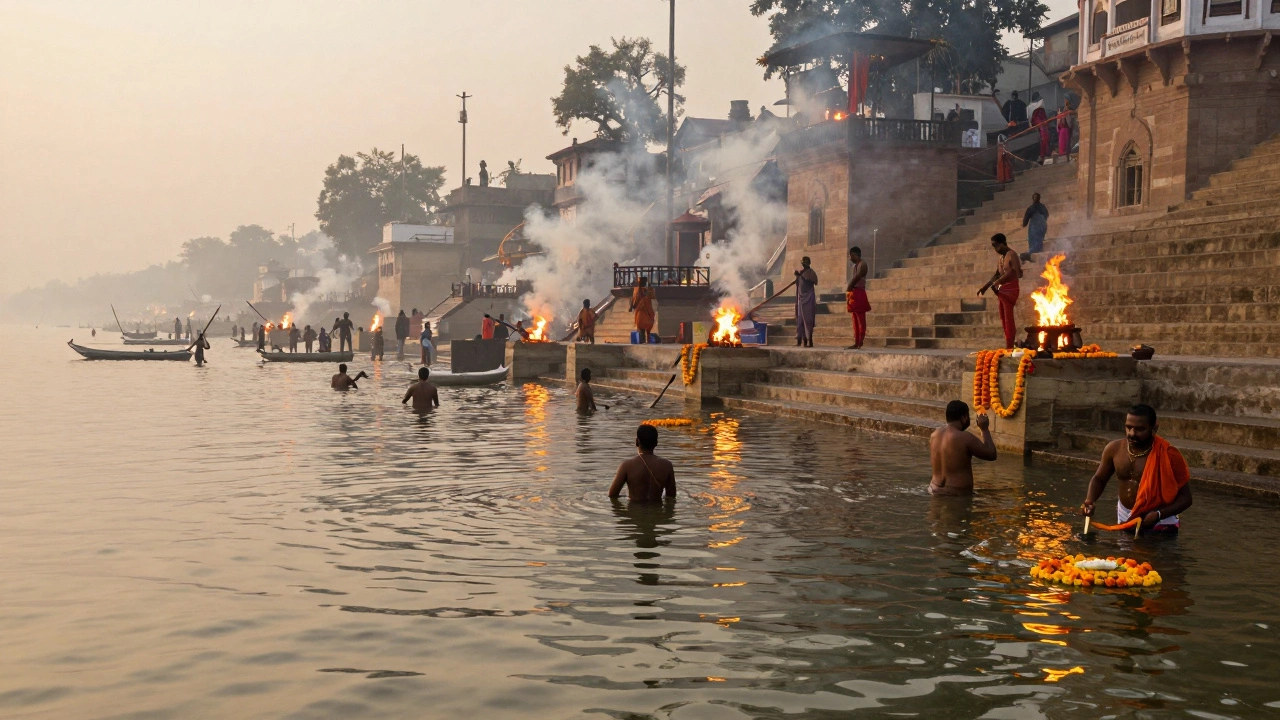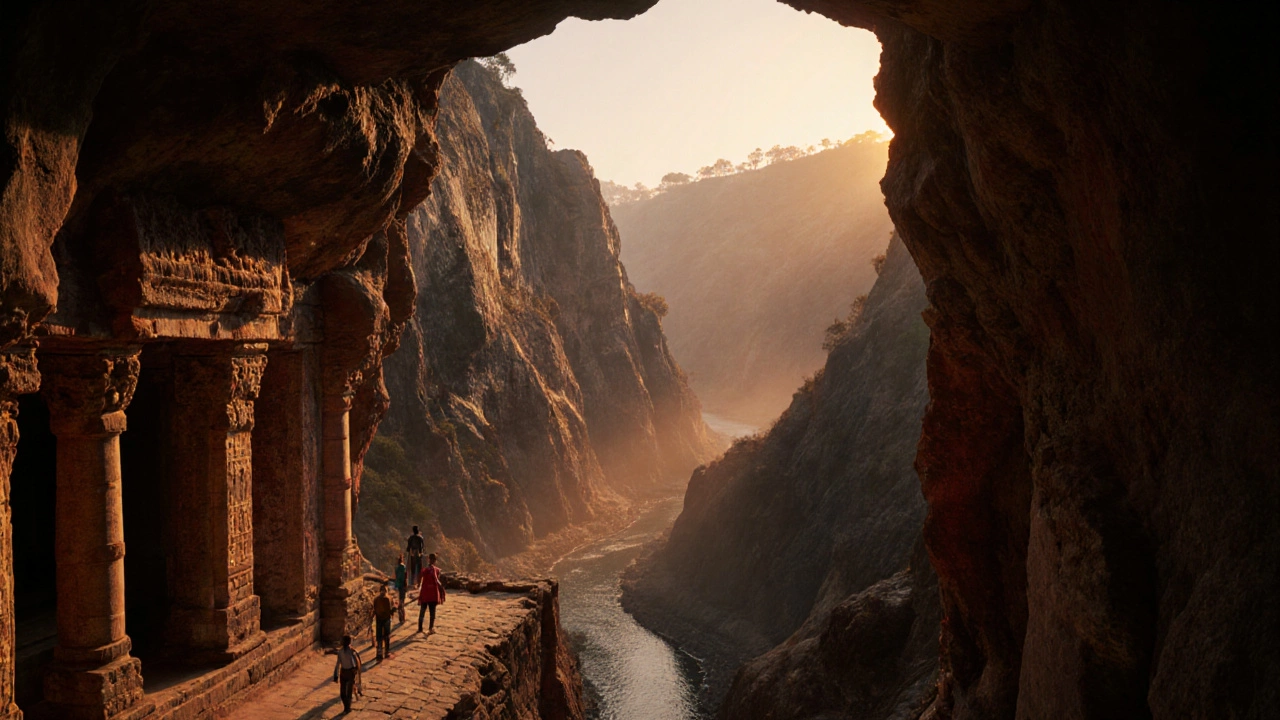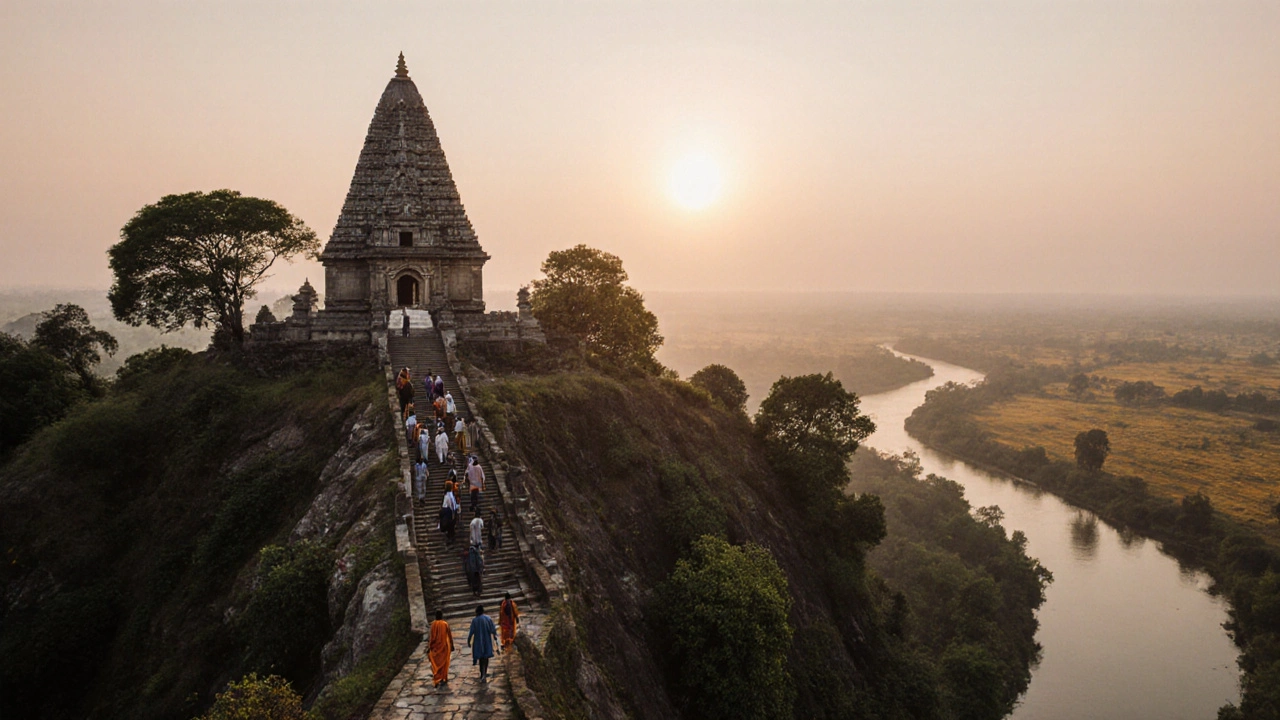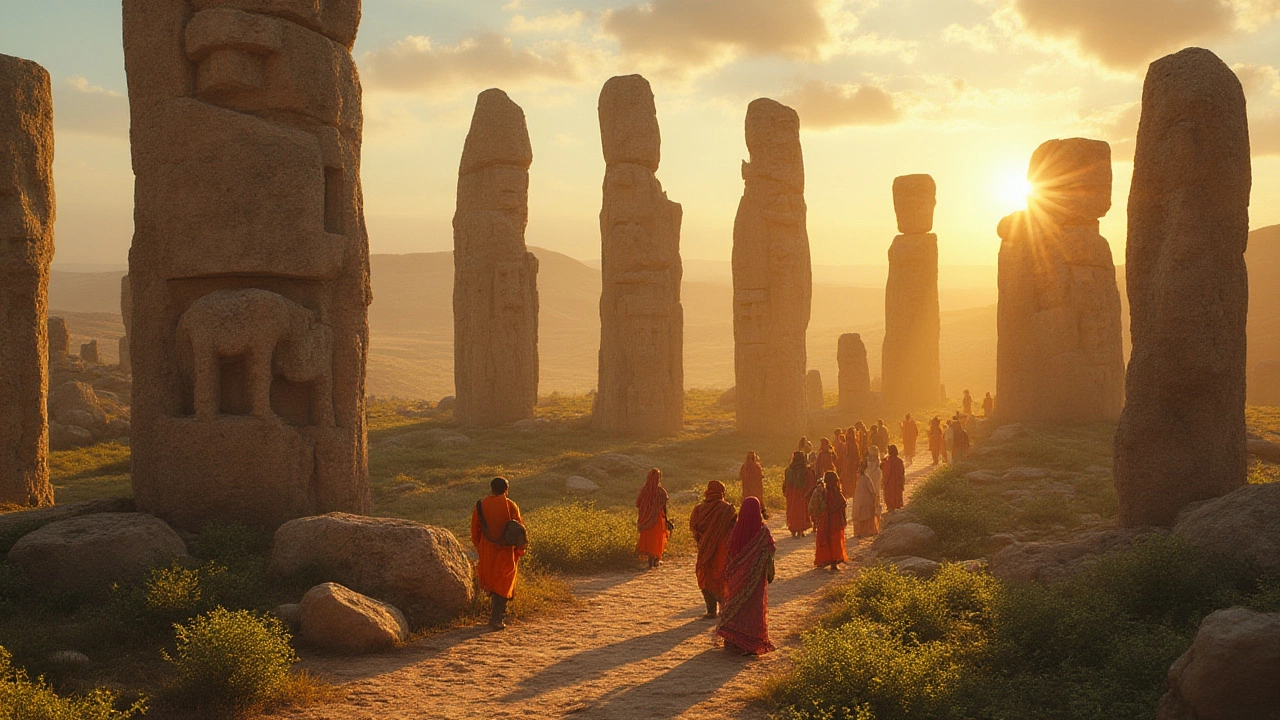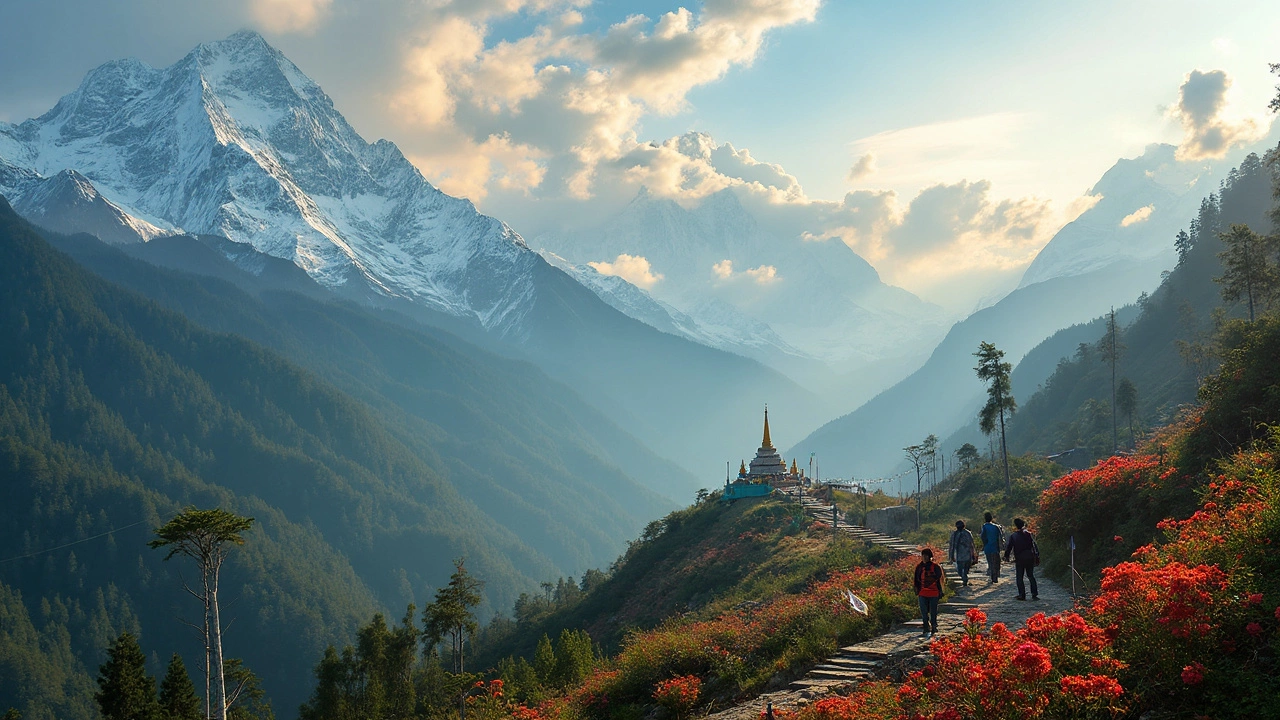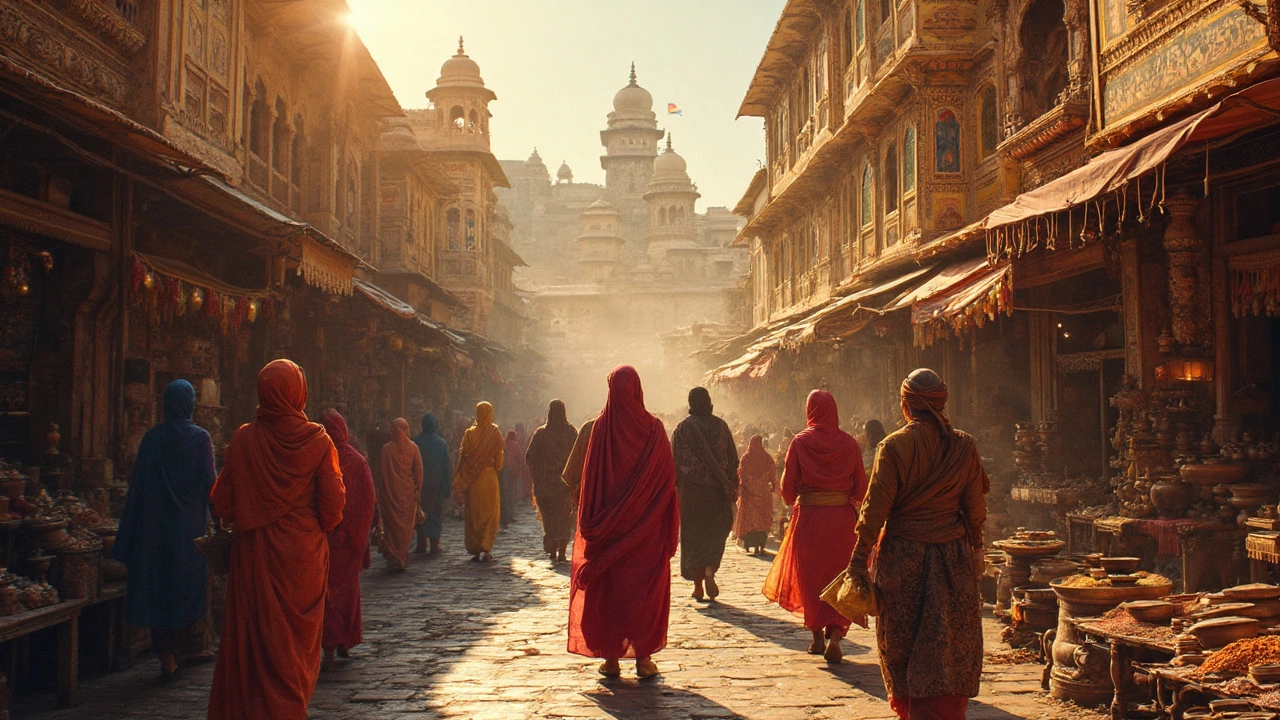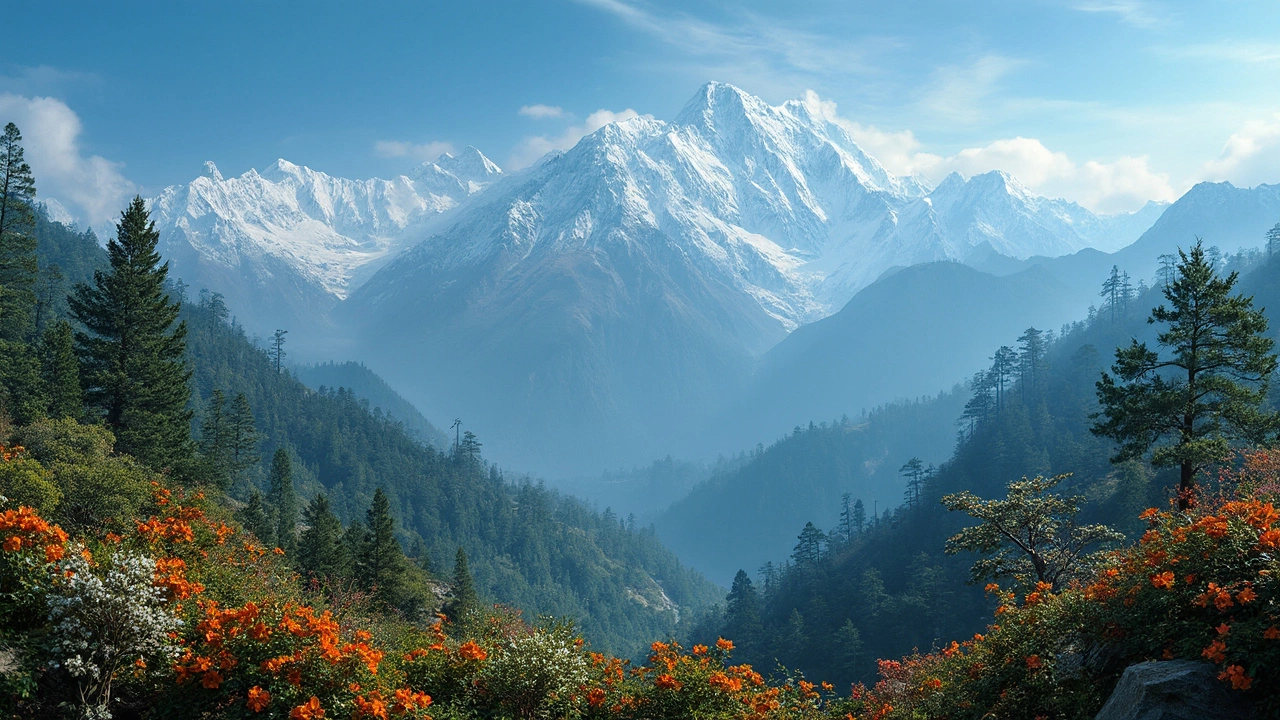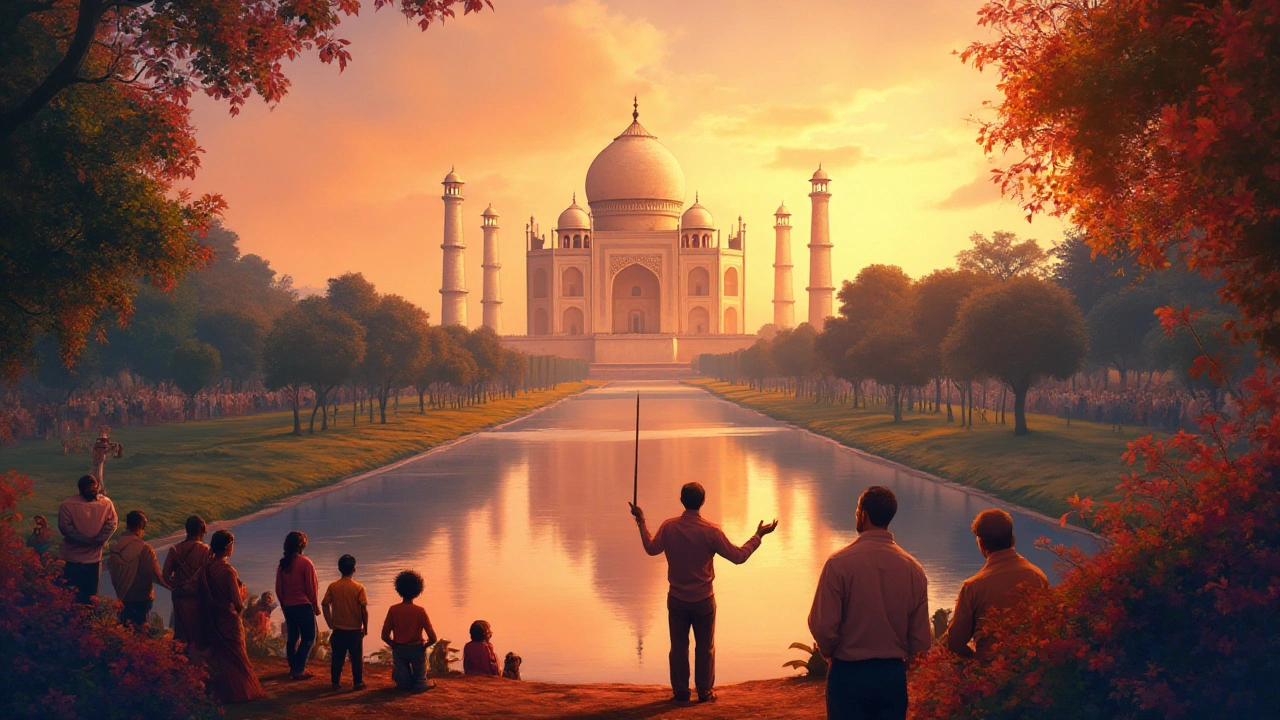Heritage Sites India: Discover the Ancient Treasures That Define a Nation
When you think of Heritage Sites India, ancient structures and living traditions that carry thousands of years of history. Also known as historical landmarks of India, these places aren’t just tourist spots—they’re the heartbeat of a civilization that never stopped breathing. From the carved caves of Ajanta to the towering forts of Rajasthan, India’s heritage isn’t locked away in museums. It’s in the chants at Varanasi, the handwoven textiles of Chettinad, and the quiet rituals at temples older than most written languages.
What makes these sites special isn’t just their age—it’s how they still matter today. Take the Ajanta Caves, India’s first UNESCO World Heritage Site, carved into cliffs over 2,000 years ago with murals that still glow with color. Or the Mundeshwari Temple, a 10,000-year-old shrine in Bihar that challenges everything we thought we knew about early human civilization. Then there’s Khangchendzonga National Park, the only mixed UNESCO site in India, where sacred mountains, rare snow leopards, and local legends exist as one. These aren’t just places on a map—they’re proof that history doesn’t die. It adapts. It survives in the hands of priests, the songs of villagers, and the footsteps of travelers who choose to listen.
Some states in India hold more heritage than others, but no single region owns it all. The north has grand palaces and Mughal gardens. The south has temple complexes that pulse with daily worship. The east holds forgotten shrines and ancient scripts. The west? Coastal forts and rock-cut wonders. What ties them together? A deep, unbroken thread of culture that refuses to be erased. And that’s why visiting these sites isn’t just about sightseeing—it’s about understanding where India came from, and how it still moves today.
There’s no single answer to what makes a heritage site truly valuable. Is it the architecture? The age? The stories told by locals? The truth is—it’s all of it. And that’s why the collection below doesn’t just list places. It shows you how these sites connect to people, beliefs, and nature. You’ll find deep dives into the oldest sites, surprising facts about the ones no one talks about, and real tips for going beyond the crowds. Whether you’re planning your next trip or just curious about what makes India’s past so alive, you’ll walk away with more than a checklist. You’ll walk away with context.
Which Culture Is Rich in India? Discover the Heartbeat of Its Heritage Sites
India's cultural richness isn't tied to one place-it lives in ancient temples, living crafts, and daily rituals from Varanasi to Chettinad. Discover the heritage sites where tradition still breathes.
Who is the most beautiful woman in India? The truth behind the question and what it says about heritage
The question of who is the most beautiful woman in India misses the point-true beauty in India is found in heritage, resilience, and quiet strength, not in pageants or social media.
India’s Oldest UNESCO World Heritage Site: The Ajanta Caves Explained
Discover why Ajanta Caves hold the title of India's oldest UNESCO World Heritage Site, explore its history, compare it with other 1983 sites, and get practical travel tips.
Mundeshwari Temple: India's 10,000‑Year‑Old Ancient Shrine
Discover the mystery of India's 10,000‑year‑old temple. Learn about Mundeshwari Temple’s legends, archaeology, architecture, travel tips, and how it compares to other ancient shrines.
Oldest UNESCO Heritage Site in the World: Discover Göbekli Tepe and Humanity's Origins
Uncover the secrets of the world's oldest UNESCO heritage site, Göbekli Tepe. Learn its history, facts, and why it changes what we know about civilization.
Mixed World Heritage Sites in India: Which Place Holds This Unique Status?
India has only one site recognized as a 'mixed' World Heritage Site by UNESCO, combining both natural beauty and rich cultural significance. This article dives into what makes a World Heritage Site 'mixed,' and shines a light on Khangchendzonga National Park in Sikkim. Expect practical tips for visiting, cool facts most people miss, and a look at why no other site in India has pulled off this rare double honour. Get ready to see how nature, folklore, and local communities all share the spotlight in this Himalayan wonder.
Richest Heritage State in India: Where Culture Lives and Breathes
India has a crazy mix of heritage, but some states stand out more than others. This article digs deep into which Indian state truly packs the biggest punch when it comes to culture, history, and heritage sites. Find out what makes this state a magnet for history fans and curious travelers. You'll get fun tidbits, useful tips for planning visits, and insights you rarely hear about. Whether you're looking to explore ancient forts, palaces, or bustling old cities, this guide will point you in the right direction.
Unveiling India's Largest Natural World Heritage Site
India is home to some of the most magnificent natural world heritage sites. This article explores the largest among them, offering insights into its distinct features and the wildlife that inhabits it. You'll discover why it holds such importance and find tips on how to experience the site responsibly. Understanding the value of these sites is crucial for conservation efforts.
Why Heritage Sites Matter in India
Heritage sites in India play a crucial role in preserving the nation's deep-rooted history, intricate culture, and diverse traditions. These sites, from the monumental Taj Mahal to the ancient forts of Rajasthan, serve not only as attractions but as repositories of stories and legacies. They help foster national pride and identity while contributing significantly to tourism and education. Understanding the value of these sites encourages both preservation efforts and a deeper appreciation of India's rich tapestry.
